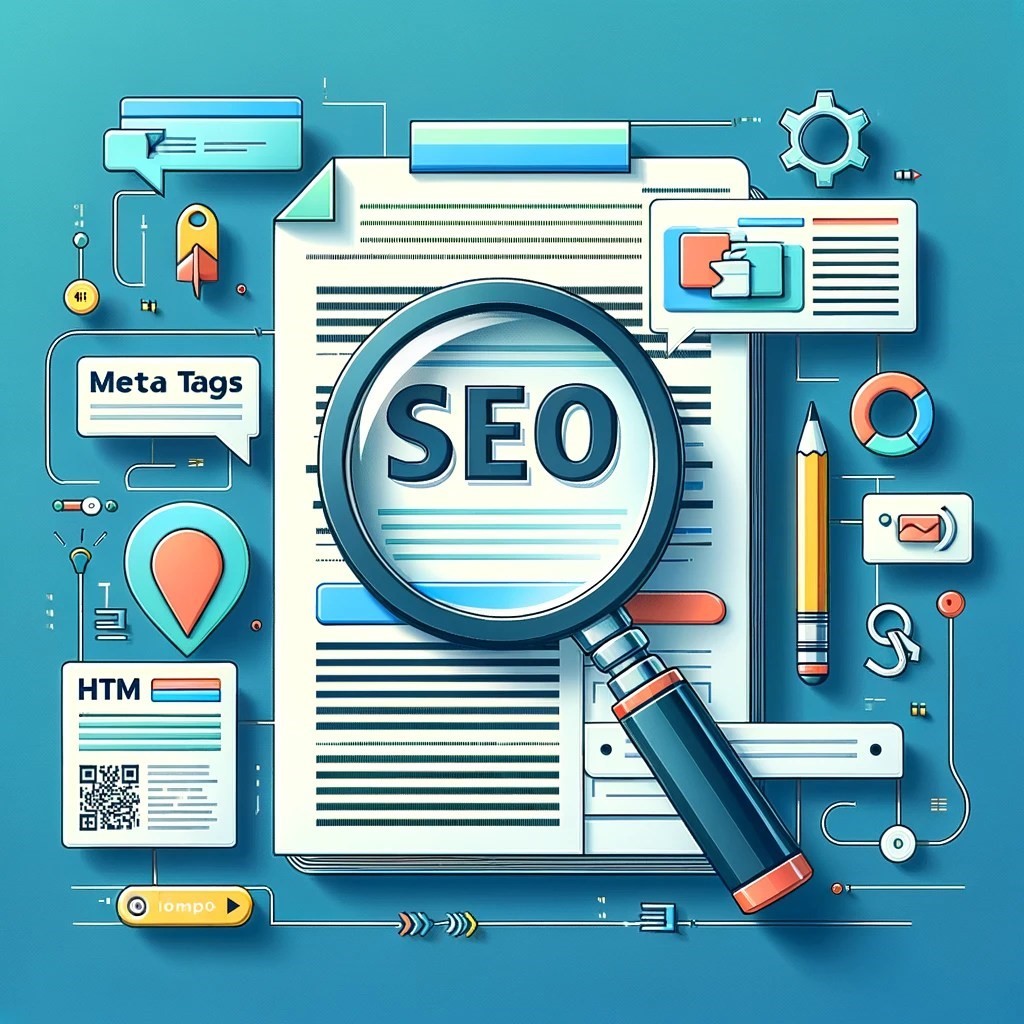Meta Magic: How Title Tags & Descriptions Help Drive Search Success

Meta tags, especially the <title> tag and meta descriptions, are an important component of on-page optimization, albeit in different ways.
The <title> tag is a heavyweight contender in SEO for a couple of reasons: search engines give it a slight edge by weighing the words used within it a bit more heavily, and it’s the tag that users see on the search results page, making it crucial for matching user search intent.
On the other hand, the meta description operates differently. While it doesn’t influence how a website ranks or how it’s categorized by search engines, it can be vital for user engagement. A well-crafted meta description can be the difference between a user clicking through to your website or bypassing it for another. It’s the narrative that complements your title tag, enticing users with a summary of what they’ll find on your page.
The On-Page Title vs. The Title Meta Tag
When diving into the intricacies of SEO, it’s crucial to distinguish between two elements that often get confused: the on-page title and the title meta tag. While both play significant roles in the user experience and search engine optimization, they serve different purposes and impact your website in unique ways.
The On-Page Title (H1 Tag)
The on-page title, typically marked up with an H1 tag in HTML, is the visible headline that users see when they land on your page. It’s an important part of the on-page content, serving the dual purpose of grabbing attention and providing a clear indication of the page’s subject matter.
Key Characteristics:
-
Visibility: The H1 tag is prominently displayed on the webpage itself, directly influencing the user’s first impression.
-
Content Hierarchy: It plays a role in structuring content, signaling to the user (and to search engines) what the primary focus of the page is. If another element than the H1 tag is used, that’s not a problem; search engines render web pages and can “see” what part is or should be the prominent title or headline.
-
Search Engine Weighting: In the very early days of search engines, words within the H1 tag were given a little bit more weight. Those days are long, long gone.
The Title Meta Tag
In contrast, the title meta tag is a piece of HTML code that specifies the title of the web page as a document. This title does not appear on the page itself but is displayed on SERPs as the clickable headline for a site’s listing and on browser tabs.
Key Characteristics:
-
Search Engine Weighting: Words in the title meta tag can be given a little bit more weight by search engines in determining the relevance of a webpage for specific search queries.
-
SERP Visibility: It serves as the first point of contact between your website and potential visitors on search engines, making it crucial for click-through rates. If a user searches for “buy coffee online”, having those words as close to the start of your title meta tag as possible is important.
Distinguishing Between the Two
-
Purpose and Placement: The on-page title (H1) guides the reader once they are on the page, while the title meta tag is designed to attract the user from the search engine results page.
-
SEO Impact: While both are important for SEO, the title meta tag has a bit more direct impact on search rankings. The on-page title supports the page’s content relevance and structure. Remember that no one on-page element is the make-or-break for relevance and rankings. Instead, aim to align all factors in the same direction.
-
Content Strategy: The on-page title should be engaging and relevant to the content it introduces, while the title meta tag needs to be optimized for search engines and user click-through by including targeted keywords and matching search intent.
Best Practices
To maximize the effectiveness of both elements:
-
Ensure that both the on-page title and the title meta tag are descriptive and keyword-rich, but avoid duplicating them verbatim. Each should offer unique value, with the meta title focusing on search optimization and on getting click-throughs from the search results, and the H1 providing context and structure to the page content.
-
Keep the title meta tag concise and to the point, typically under 60 characters, to ensure it displays correctly on SERPs.
-
Use the on-page title (H1) to reinforce the topic and engage the reader, making sure it aligns closely with the content of the page.
The Significance of Meta Descriptions
While the meta description doesn’t directly influence your website’s ranking in search, its importance in driving user engagement and click-through rates (CTRs) cannot be overstated. A well-crafted meta description acts as a brief advertisement for your page, providing potential visitors with a snapshot of what to expect, which in turn can significantly influence their decision to click through to your site.
In that sense, you can easily think of meta descriptions as free PPC ads.
Crafting Effective Meta Descriptions
Creating impactful meta descriptions requires a balance between being informative and engaging. Here are some best practices:
-
Be Concise and Compelling: With only 160 characters at your disposal, every word counts.
-
Include Target Keywords: While meta descriptions don’t directly impact rankings, including relevant keywords can help show users that your page is relevant to their search query.
-
Match Content to User Intent: Ensure that your meta description accurately reflects the content of your page. Misleading descriptions can lead to high bounce rates, which can negatively affect your site’s reputation with search engines over time.
Meta Descriptions and SERPs
The relationship between meta descriptions and their display in SERPs is not guaranteed. Search engines often choose to display a snippet from the page’s content that closely matches the user’s query. However, crafting a well-thought-out meta description increases the likelihood that it will be used, especially when it aligns closely with the search intent.
The Indirect Impact on SEO
Although meta descriptions themselves do not influence ranking, their effect on user behavior can indirectly impact SEO. A high click-through rate, driven by an engaging meta description, signals to search engines that your page is relevant and valuable to searchers, which can contribute to improved rankings over time.
In summary, while meta descriptions may not directly affect your SEO rankings, their ability to influence user behavior makes them an indispensable tool in your SEO arsenal. By dedicating time to craft clear, compelling, and concise meta descriptions, you can improve both the user experience and the overall effectiveness of your SEO strategy.
About the Author: Ruud Hein
The post Meta Magic: How Title Tags & Descriptions Help Drive Search Success appeared first on Search Engine People Blog.
(7)






